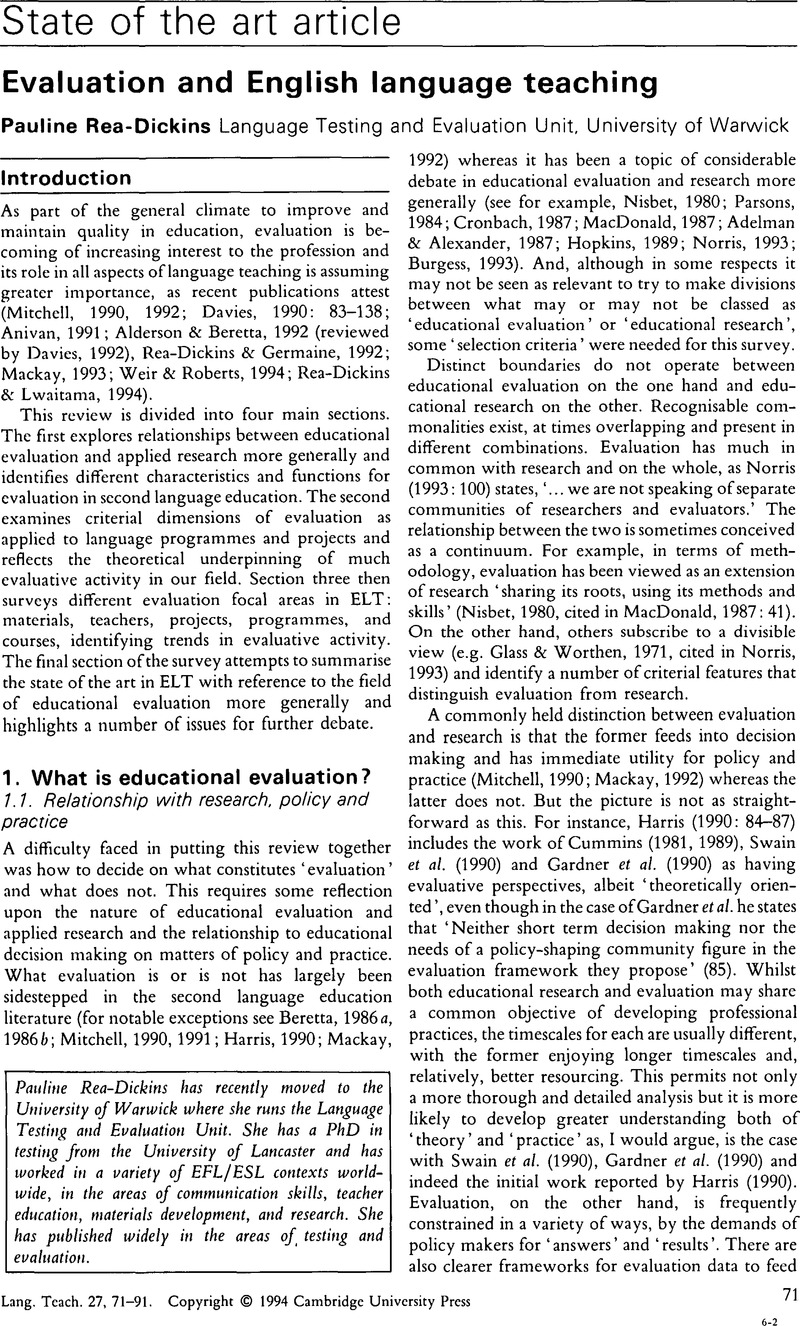Crossref Citations
This article has been cited by the following publications. This list is generated based on data provided by Crossref.
Murphy, Dermot F.
1996.
The Evaluator's Apprentices.
Evaluation,
Vol. 2,
Issue. 3,
p.
321.
Peacock, Matthew
1997.
Comparing learner and teacher views on the usefulness and enjoyableness of materials.
International Journal of Applied Linguistics,
Vol. 7,
Issue. 2,
p.
183.
Burden, Peter
2008.
Does the use of end of semester evaluation forms represent teachers’ views of teaching in a tertiary education context in Japan?.
Teaching and Teacher Education,
Vol. 24,
Issue. 6,
p.
1463.
Kiely, Richard
2009.
Small answers to the big question: Learning from language programme evaluation.
Language Teaching Research,
Vol. 13,
Issue. 1,
p.
99.
Haedong Kim
2009.
Theoretical Perspectives on Materials Evaluation and Selection in English Language Teaching.
English21,
Vol. 22,
Issue. 4,
p.
179.
Burden, Peter
2010.
Creating confusion or creative evaluation? The use of student evaluation of teaching surveys in Japanese tertiary education.
Educational Assessment, Evaluation and Accountability,
Vol. 22,
Issue. 2,
p.
97.
Melliti, Mimoun
2013.
Global Content in Global Coursebooks.
SAGE Open,
Vol. 3,
Issue. 4,
p.
215824401350726.
Finch, Andrew
2014.
Exploring EFL Fluency in Asia.
p.
59.
Liao, Paoling
Lin, Cheng-Shiuan
and
Fu, Hsiao-Chu
2016.
Life of Pi.
p.
1.
Ulum, Ömer Gökhan
and
Köksal, Dinçay
2019.
Ideology and Hegemony of English Foreign Language Textbooks.
p.
9.
Gaffas, Zainab M.
2019.
Students’ perceptions of the impact of EGP and ESP courses on their English language development: Voices from Saudi Arabia.
Journal of English for Academic Purposes,
Vol. 42,
Issue. ,
p.
100797.
AYSU, Semahat
2022.
Evaluation of the textbook used in the pandemic: From teachers’ and students’ perspectives.
RumeliDE Dil ve Edebiyat Araştırmaları Dergisi,
p.
833.





